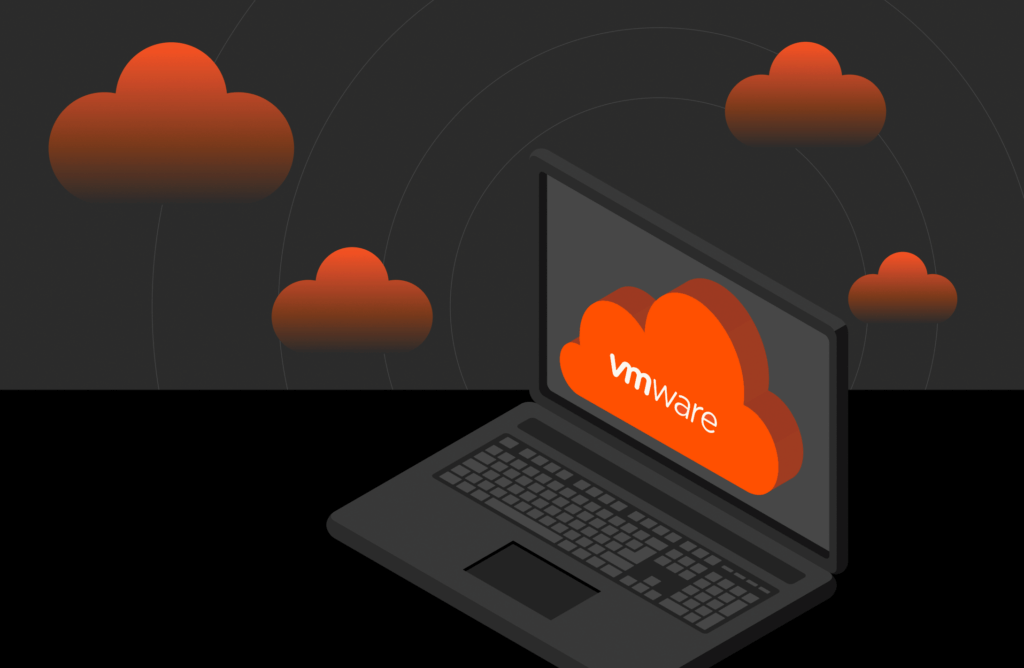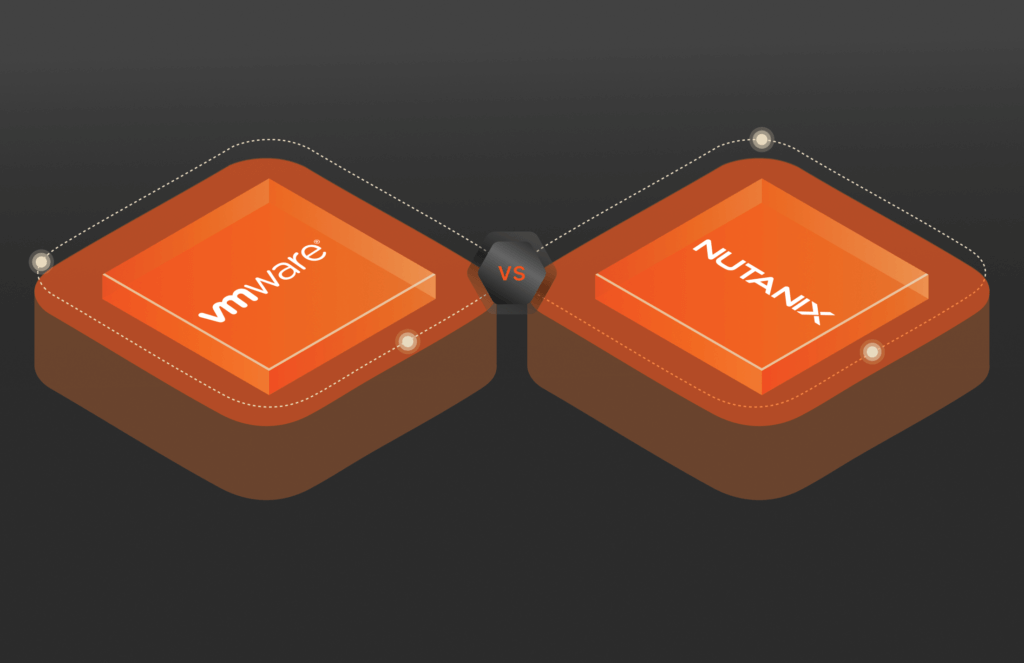Summary
VMware Cloud Foundation (VCF) and VMware vSphere Foundation (VVF) address different needs and priorities. VCF is ideal for enterprises embracing hybrid cloud strategies, while VVF is better suited to smaller businesses with basic virtualization needs.
Virtualization has transformed IT infrastructure, enabling organizations to streamline operations, improve resource utilization, and scale seamlessly. VMware, a leader in virtualization technology, offers two prominent solutions: VMware Cloud Foundation (VCF) and VMware vSphere Foundation (VVF).
The solutions serve distinct purposes and address different use cases. For IT decision-makers, understanding the key differences between VCF and VVF is essential for optimizing performance, scalability, and overall infrastructure costs.
This article unpacks VCF and VVF, explores their benefits, and offers tips on choosing the right solution based on your organization’s needs.
What Is VMware Cloud Foundation (VCF)?
VMware Cloud Foundation (VCF) is a comprehensive hybrid cloud platform that integrates computing, storage, networking, and management into a unified solution. It leverages VMware’s software-defined data center (SDDC) technologies to enable seamless deployment and management of cloud environments.
Some key features of VCF include:
- Unified management: VCF provides centralized management of resources across private and public cloud environments. This simplifies operations and reduces complexity, especially for large-scale deployments.
- Integrated Kubernetes: With vSphere with Tanzu, VCF allows organizations to run both virtual machines and Kubernetes containers on the same platform, enabling modern application development.
- Seamless scalability: The platform supports scaling from on-premises data centers to public clouds, making it ideal for hybrid cloud strategies.
What Is VMware vSphere Foundation (VVF)?
VMware vSphere Foundation (VVF) is the entry-level edition of VMware vSphere, designed for basic virtualization needs. It offers core hypervisor functionality, enabling organizations to consolidate workloads and improve hardware utilization.
VVF provides features such as:
- Basic virtualization: VVF allows organizations to run multiple virtual machines on a single physical server, optimizing resource utilization.
- Simplified management: With vSphere Client, VVF provides an intuitive interface for managing virtualized environments.
- Cost-effective solution: VVF is more affordable as a foundational product, making it suitable for small to medium-sized businesses (SMBs) or organizations with limited virtualization requirements.
Key Differences between VCF and VVF
While both platforms fall under VMware’s umbrella, their functionality and target audiences differ significantly:
| Aspect | VMware Cloud Foundation (VCF) | VMware vSphere Foundation (VVF) |
| Purpose | End-to-end hybrid cloud platform | Basic virtualization for single-host environments |
| Core Features | Includes vSphere, vSAN, NSX, and vRealize Suite | Core hypervisor functionality without add-ons |
| Target Audience | Large enterprises with hybrid cloud or Kubernetes workloads | SMBs with straightforward virtualization requirements |
| Scalability | Seamlessly integrates with public clouds and scales horizontally | Limited to on-premises infrastructure |
| Cost | Higher investment due to comprehensive features | Budget-friendly for smaller deployments |
| Kubernetes Support | Built-in support via vSphere with Tanzu | No native Kubernetes integration |
Benefits of Using VMware Cloud Foundation (VCF)
Organizations adopting VCF gain access to advanced features that enhance flexibility and operational efficiency:
- Comprehensive toolset: VCF integrates computing, storage, and networking, reducing the need for third-party tools.
- Unified management across clouds: VCF provides a single pane of glass to manage resources across private and public clouds. This ensures consistency and operational efficiency, especially for businesses with hybrid or multi-cloud strategies.
- Kubernetes and modern applications: With vSphere with Tanzu, VCF allows organizations to run Kubernetes containers alongside traditional virtual machines. This integration supports DevOps teams by enabling rapid application development and deployment. With tools like Portworx®, you can easily take this to a greater level with storage solutions designed for container workloads.
- Scalability for enterprises: VCF is ideal for enterprises experiencing growth, as it allows businesses to extend their infrastructure to public clouds like AWS, Azure, and Google Cloud, without requiring significant architectural changes.
Benefits of Using VMware vSphere Foundation (VVF)
VVF provides a practical entry point into virtualization, with benefits tailored to smaller-scale environments:
- Hardware consolidation: VVF reduces physical hardware needs, cutting costs and energy consumption.
- Core virtualization capabilities: VVF provides the essential tools needed to virtualize servers, manage virtual machines (VMs), and improve resource utilization. It’s especially valuable for SMBs with limited IT budgets or straightforward infrastructure needs.
- Simplified management: With the vSphere Client, managing virtualized environments is intuitive and accessible even to smaller IT teams.
- Cost-effective entry point: VVF is designed for businesses prioritizing affordability. Its streamlined feature set keeps costs manageable without compromising on reliability.
- Integration with external tools: Integrating Pure Storage solutions, like FlashArray™, enhances VVF environments by delivering high-performance storage and simplifying data management.
How VCF and VVF Are Used in the Real World
VCF and VVF cater to distinct industries and use cases. Selecting the right platform depends on the specific requirements of the organization. Organizations with hybrid cloud goals or containerized workloads often gravitate toward VCF, while those seeking affordable virtualization for static workloads lean toward VVF. Below are the primary industries and scenarios where each solution excels:
Healthcare
Healthcare providers managing electronic health records (EHRs) benefit from VCF’s scalability and disaster recovery capabilities. For instance, a large healthcare system might adopt VCF to centralize its IT operations across multiple facilities, ensuring compliance and high availability. Smaller health organizations with localized IT systems might rely on VVF to virtualize patient scheduling or billing software.
Finance
Banks and financial institutions need robust disaster recovery and secure infrastructure. VCF’s advanced security features and compatibility with public cloud services make it an ideal choice. Meanwhile, smaller credit unions might deploy VVF to reduce hardware costs for day-to-day operations.
Education
Universities with sprawling IT environments could use VCF for workload mobility between campuses and clouds. Conversely, local schools might find VVF sufficient for virtualizing administrative systems like enrollment databases.
E-commerce and Retail
E-commerce platforms requiring high performance during seasonal peaks can leverage VCF’s seamless scalability to handle traffic surges. Retail chains with simpler needs, like virtualized point-of-sale (POS) systems, often use VVF.
Integrating Pure Storage solutions with VMware platforms—whether VCF or VVF—offers significant advantages:
- Policy-driven storage management: Pure Storage vVols integration allows for granular control over storage, ensuring resources are allocated efficiently based on workload demands.
- Seamless scalability: Solutions like FlashArray and Pure Cloud Block Store™ enable businesses to scale their VMware environments without performance degradation.
- Enhanced resilience: With features like SafeMode™ Snapshots, Pure Storage adds an extra layer of protection against ransomware and data loss.
How to Choose between VCF and VVF
Selecting the right platform depends on your organization’s needs and goals.
Choose VCF if:
- You require hybrid or multi-cloud infrastructure.
- Your workloads include modern applications like containers.
- Scalability and integrated management are top priorities.
Choose VVF if:
- Your organization is small or medium-sized with basic virtualization needs.
- You’re prioritizing cost-efficiency over advanced features.
- You operate within a static, on-premises environment.
Conclusion
VMware Cloud Foundation (VCF) and VMware vSphere Foundation (VVF) represent two ends of the virtualization spectrum, catering to organizations with varying needs and priorities. While VCF is ideal for enterprises embracing hybrid cloud strategies, VVF offers an accessible entry point for smaller businesses with basic virtualization requirements.
Integrating Pure Storage solutions—such as FlashArray, and Pure Cloud Block Store—with either platform enhances their capabilities, delivering seamless, policy-driven storage management and improved performance. Explore how Pure Storage can optimize your VMware environment.

BUYER’S GUIDE, 14 PAGES
A Buyer’s Guide to Modern Virtualization
Optimize VMware Storage
Take your VMware environment to the next level with Pure Storage.






